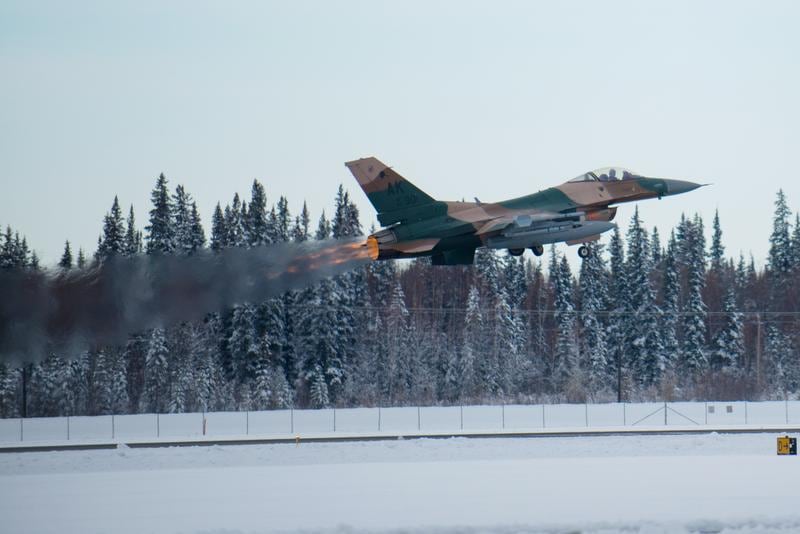The past ten years have turned most Military and Police units away from iron sights, and into the world of optics. There is no question that shooting scores and real world hit percentages have gone up with the use of red dot and magnified optics. We've all used them, and while iron sights are still a solid fundamental to be familiar with, I'll bet there are very few of us who are interested in going back to them. Battery life, and reliability are the first topics brought up when we think of optics, but how often do we consider the optic mount itself?
Knights Armament Corp (KAC) has done an early release of their new Aimpoint T-1 mount ((P/N 25682). In speaking with C. Reed Knight III, these are mounts are production mounts, but changes may be made in the future as additional feedback comes in. KAC has taken something as simple as a mount, and gone after it with their usual determination, and brings a little extra with their mount.
The KAC mount arrives with all mounting hardware, screws, and spacers needed. The box was opened to reveal everything in sealed packaging, and there is no way that parts are going to get lost, unless of course its on your end after you cut open the bags. KAC T-1 mount height options come three fold. First, you can install the optic direct to the KAC T-1 mount, this method is functional for the HK 416 users. Second, the user can install one of the risers, which gives an absolute co-witness. The absolute co-witness places the iron sights directly inline with the red dot. Last, but probably the most popular, is the use of both risers which raises the optic and places the iron sights in the lower third of the sight picture. This gets the shooters head up a little higher, while still retaining a cheek to stock weld.
In speaking with Reed Knight III, we talked about mounts in general, as well as the KAC Micro Aimpoint Mount P/N:25682. There are a lot of companies that base everything on "return to zero" after removal and reinstallation. While this is nice for CQB weapons, and perhaps even standard distance shooting, a sniper isn't likely to rip his scope off while out in the field so he can drop on an Eotech or Aimpoint, regardless of what the mount will do. Real world precision and distance shooting involves rezeroing or verification of zero after removal of scope or other work. Reed commented that while a .5 or 1.0 MOA return is considered good for most companies mounts, it still isn't what they look for in a precision weapon mount. In military testing, the KAC SASS mount was considered the most accurate, and most repeatable mount tested. Through removal and installation the mount was exact enough that no measurable shift was found in testing. Pretty impressive, but this was not done through the use of QD mount. This was through a traditional one piece non removable scope mount. What does all of this have to do with the KAC Aimpoint T-1 QD mount? Simple, it shows that KAC isn't looking for a one piece fits all solution.
The mount is machined from billet, and the underside reveals two solid lugs which engage 1913 spec rails. The third and center lug moves back and forth, and interfaces with the tension adjustment screw on one side, and the the locking QD lever on the other. The lever angles back against the receiver, and isn't likely to snag on anything. In shooting and running dry drills with this unit mounted and in full gear, I've found it simple to remove and install with one hand, as well as snag free. The mount is also reversible in the event that other equipment being mounted is a consideration. Another nice feature is that the locking lever does not directly cam against the rail surface, which eliminates the possibility of receiver gouging. Along those same lines, the mount clamping surface is right at 1.25" from my measurement, which is a nice departure from mounts which rely on a small contact section.
I've used this mount on 4 different manufacturers rails (Daniel Defense, Vltor, KAC, and Noveske) and 6 different upper receivers to include standard forged military uppers as well as the reinforced Vltor MUR and VIS. As you might expect, there were minor variances between them, but adjustment of the mount is done easily by releasing the locking lever, then pressing directly in. With this done, the adjustment screw emerges from the other side, and can be tightened or loosened by hand or with a coin. No wrenches or other tools are required for mount tension adjustment.
At $180, the only downside would be considered the price. Reed commented on this and pointed out that the initial production models were limited, and that costs are obviously higher with limited production runs. KAC is actively looking at ways to lower the cost, while still retaining the high quality that KAC holds to each of its products. Reed felt that once full production was underway, these would become more widely available and with a lower price tag.
To sum it up, while a little more expensive than some of the cheaper mounts, this is a high quality, tool free, mount that provides a very close return to zero and gives users three different mounting heights. If you own an Aimpoint T-1, this is worth looking at.
[gallery=81]





